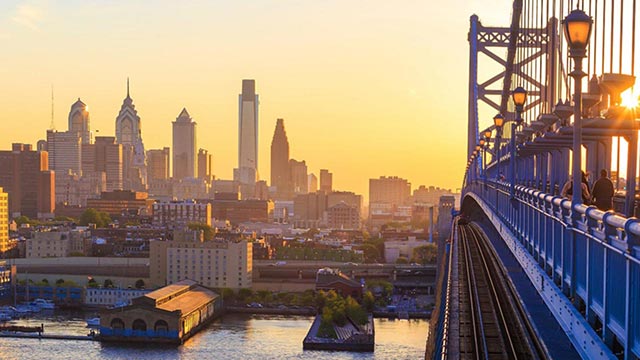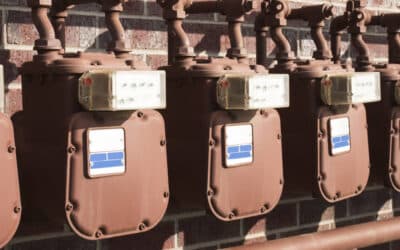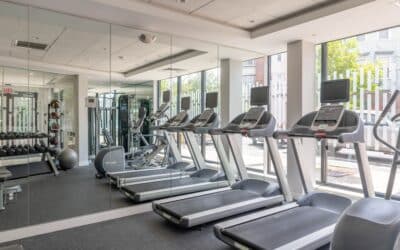Philly Apartments have actually been growing in size, until recently…
If you read the real estate section of the news or attend real estate conferences, conventional wisdom today is that apartment sizes are getting smaller. There are a myriad of reports nationwide and on the Philadelphia market that have revealed a trend toward shrinking apartments. There are lots of reasons cited for shrinking apartments around the country including, among other factors, rising costs, limited inventory, and a shift in renter preferences.
On the surface, this hypothesis seems to make sense. If you have ever visited or rented in a new construction apartment building in Center City Philadelphia, you might conclude that the apartments seem small.
What’s Really Going On
Is that true or is it just perception? Are apartments really getting smaller in size? How do Philadelphia apartment sizes today compare to those built many years ago?
We did an analysis, with data from the world-leading real estate information platform Co-Star, across four different cohort time frames (see below for criteria), and have identified a surprising trend. (1)
Apartment sizes have actually been steadily increasing since the 1950s. It is only in recent years (2014 to 2019), that a decrease has been noted. (2)
A decrease in size is all relative though. Surprisingly, as you can see in the chart below, Philly apartments today are actually larger than their counterparts built from 1950 to 1969.
For example, take 2 Bedroom apartments. A 2-bedroom apartment in Philly today averages 1,062 square feet (2014 to 2019) which is actually about 12% larger than what they used to be in 1950 to 1969 (947 square feet).

A similar trend holds true for studios and 1-bedroom apartments.
1 Bedroom apartments are 712 square feet (2014 to 2019) but were just 681 square feet from 1950 to 1969. That means today’s apartments are 4.6% larger than they used to be.
Similarly, a studio apartment in Philly today (2014 to 2019) averages 491 square feet, whereas in 1950 to 1969 apartments, they averaged 466 square feet. That means studio apartments today are 5.4% larger than they were in 1950 to 1969.3
Perhaps touring one of those small apartments now doesn’t seem so small when you think about what renters had in the 1950s and 1960s.
Apartment Size in Philly (1950 to Today)
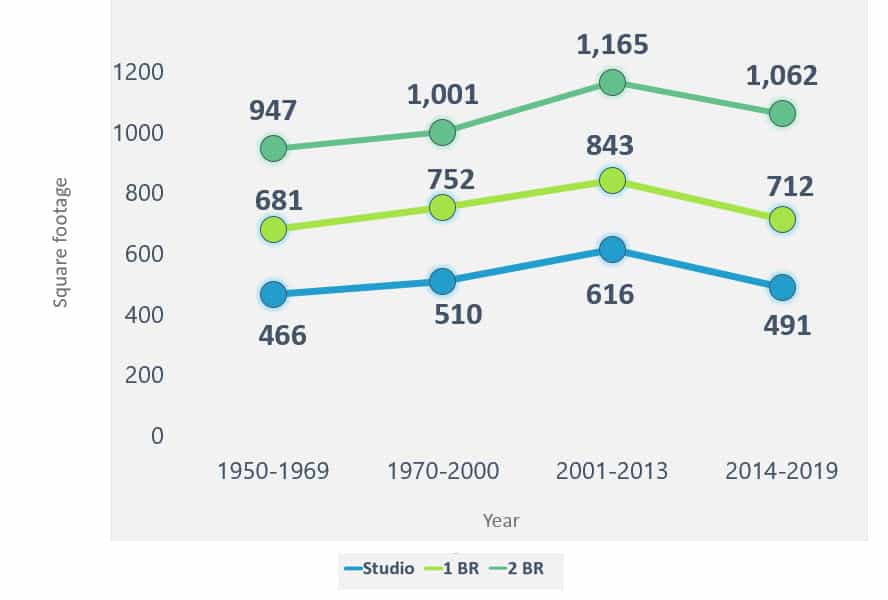
Will the Trend Continue?
Nonetheless, the trend of smaller apartments as compared to the previous decade does exist, and with strong lease up rates in Philadelphia, it seems renters are okay with the trend at least for some time.
Where do you think the trends will be in 2020 and beyond?
Infographic
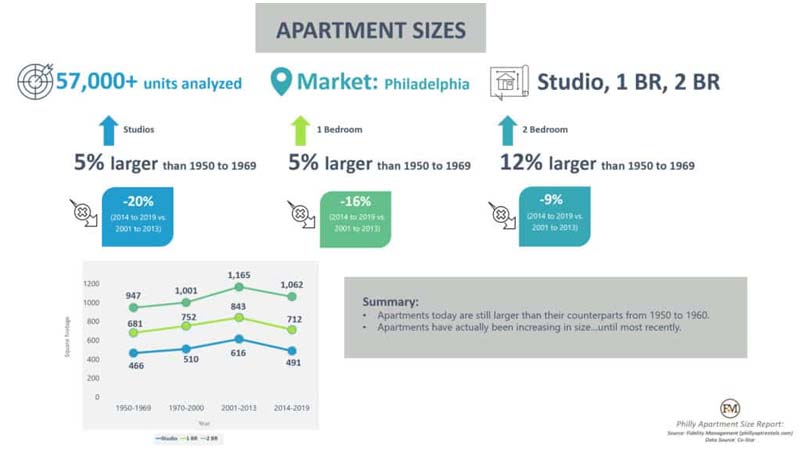
Citation: Apartment Size Report from Fidelity Management
(1) This analysis was last run in 2020 from CoStar Data, and looked at market-rate apartment data in Philadelphia across four different cohorts (1950 to 1969, 1970 to 2000, 2001 to 2013, and 2014 to 2019) which accounts for over 55,000 units across studio, 1 Bedroom, and 2 Bedrooms. Buildings built before 1950 were excluded in the analysis to help mitigate the impact of older office buildings (particularly those built between 1900 to 1929) that were recently converted into apartments whereby data would be counted as original date of building construction rather than the converted date. Although this impact is not completely eliminated, it is significantly mitigated by this approach. 3 Bedroom Apartments were looked at but ultimately excluded from this analysis as we didn’t feel there was enough unit count to generate reliable enough results.
(2) Apartments have decreased by 20.3%, 15.5%, and 8.8%, respectively, for studio, 1 bedroom, and 2-bedroom apartment units in Philadelphia from the 2014-2019 time frame compared to 2001 to 2013 time frame.
(3) It’s also true that studio apartments have been an increasingly popular unit type (they were only 13% of buildings in the first cohort whereas today they are 17% of the units in an apartment building).


